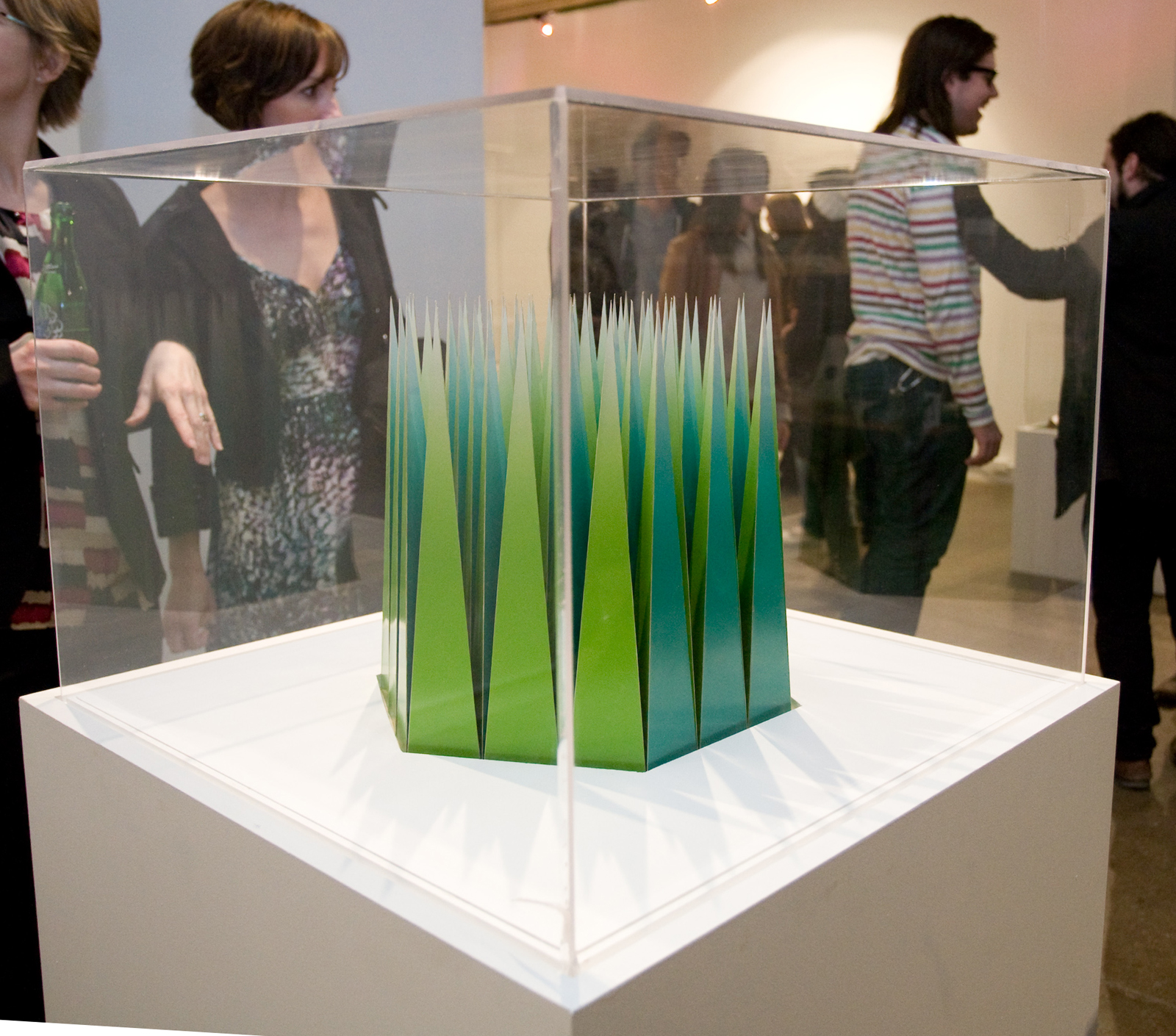
Your face, like a lone nocturnal garden in Worlds where Suns spin round!
Susy Oliveira
January 7 to February 13, 2010
Toronto-based artist Susy Oliveira examines the human preoccupation of re-producing nature with fabrications, as we attempt to possess and feel closer to the pleasures it offers without dealing with any of its potential discomforts
This installation intends to examine our preoccupation with replacing nature with fabricated versions of itself, as well as delving into ideas of digital and technological reproduction. By definition the garden, complete with its natural components, is a construction for our own pleasure and consumption. In re-producing nature, we attempt to possess and feel closer to the pleasures it offers - but without having to deal with any of its discomforts. The title for this exhibition is taken from Jean Genet's novel Our Lady of the Flowers, a passage in which he is referring to a fictional lover. In this quote, the character – Genet himself – is fantasizing about a man with whom he has never had any real contact. He fictionalizes a relationship that seems to draw up emotions that are even more intense than if the relationship was actual. For this project, Susy Oliveira hopes to translate the overwhelming sense of wonder and awe that Genet relates in this single sentence into her fictional garden. The artist is grateful for additional funding received from The Canada Council for the Arts, The Ontario Arts Council and The Toronto Arts Council to complete this project.





Essay
It is from the prose of Jean Genet that the simulated gardens of Susy Oliveira find their source. In this cabinet of curiosities, a fantastic and monstrous Eden, we find, in the metaphor of ecstatic love that the title suggests, the respect and terror that invigorates the beauty and power of nature.
Following a distinct path, Oliveira proceeds with a double intention: materializing into real space the flatness of photography and confounding the reality of these images. This simplified geometrization evokes a synthetic modelling; in this, we find a skilful sculptural work that suggests, by the angular precision of multiple facets, the work of a diamond cutter and the art of origami.
If the principles of photography are to probe and to exploit the potential of light, Oliveira’s current research seems capable of advancing on the obscure terrain of uncertain darkness and the sparkling sideral; favouring the night stars to the one of the day, fantasized love to lived relation, the idealized garden to natural experience. The frozen radiance which seems to emanate vegetation and the crystalline perfection of the prismatic forms leave us to believe that this simulated nature is a creation pulled purely from the void. Here, light and obscurity, lucidity and blindness are relayed by the metaphors of admiration, of a loss of bearings and dazzling sight, themselves suggested by the image of a lover paralysed in love, transported outside one self and deprived of the mastery of his conscience.
In front of the frightening strangeness of this supernatural garden, we are confronted with a troubling feeling which vaguely mixes the impression of reality and that of fiction, fascination and intimidation, pleasure and discomfort, as in a dream moreover, a nightmare.
– Martin Dufrasne, December 2009
Translated from French
C'est dans la prose de Jean Genet que le jardin simulé de Susy Oliveira prend sa source. Ce cabinet de curiosités, un nouvel Eden fantastique et monstrueux, nous rappelle à travers la métaphore du ravissement amoureux que suggère le titre, le respect et l'effroi qu'inspirent la beauté et la puissance de la nature.
Poursuivant une démarche singulière, Oliveira procède par un double mouvement : à la fois par la mise en relief de la planéité photographique et par la mise en abyme du réalisme de ses images. Nous retrouvons ici une géométrisation schématisée qui évoque la modélisation par images de synthèse, dans un savant travail sculptural qui rappelle, par la précision anguleuse de ces multiples facettes, le travail du diamantaire et l'art de l'orégami.
Si le propre de la photographie consiste à sonder et à exploiter les potentialités de la lumière, l'actuelle recherche d'Oliveira semble d'avantage s'avancer sur les terrains obscurs du mystère des ténèbres et du scintillement sidéral; privilégiant traiter les astres de la nuit à celui du jour, l'amour fantasmé à la relation vécue, le jardin idéalisé à l'expérience de la nature. Le rayonnement glacé qui semble émaner de la végétation et la perfection cristalline des formes prismatiques nous laissent croire que cette nature simulée est une pure création tirée du néant. Ici, la lumière et l'obscurité, la lucidité et l'aveuglement sont relayés par les métaphores de l'admiration, de la perte de repères et de l'éblouissement, elles-mêmes suggérées par la figure d'un amoureux transit par la passion amoureuse, transporté hors de lui-même et privé de la maîtrise de sa conscience.
Devant l'inquiétante étrangeté de ce jardin surnaturel, nous sommes traversés par un sentiment trouble dans lequel se mêlent indistinctement l'impression du réel et celui de la fiction, la fascination et l'intimidation, le plaisir et l'inconfort, comme dans un rêve ou encore, comme dans un cauchemar.
– Martin Dufresne
Biography
Susy Oliviera is a graduate of the Ontario College of Art and Design and holds an MFA from the University of Waterloo.
susyoliveira.ca
Martin Dufresne is an artist/curator living in Montreal. Well known for his numerous collaborations with Carl Bouchard (since 1998), he was the 2009 guest curator for the Symposium international d’art contemporain de Baie-Saint-Paul. Currently he is Programming Coordinator at Dare-Dare in Montreal.
